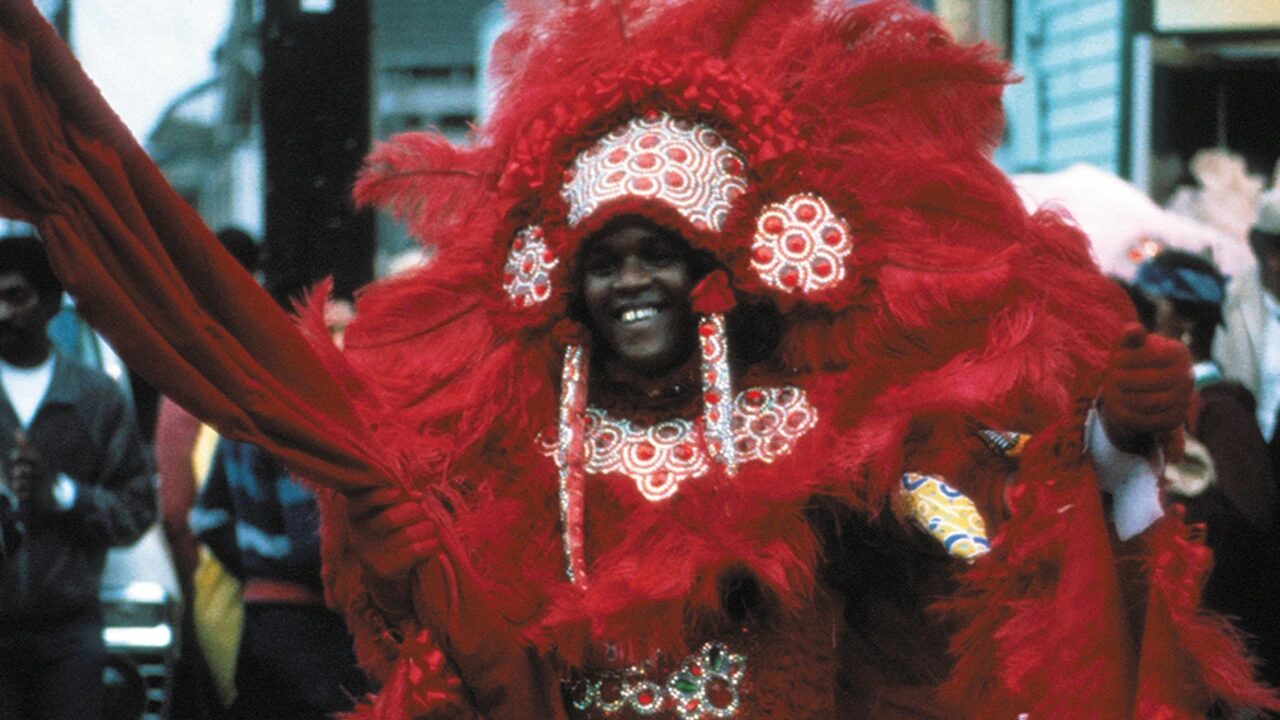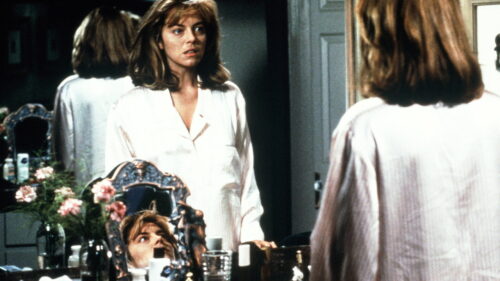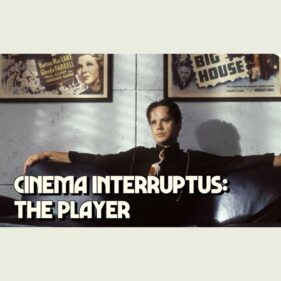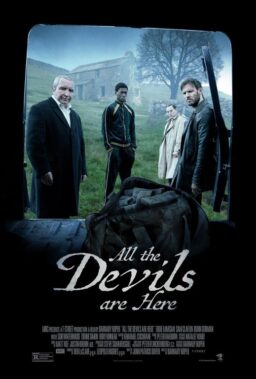Hurricane Katrina made landfall in August 2005, tearing up the southern states and wreaking singular damage on New Orleans, one of the most diverse and sophisticated US cities, and one of the great nexus points of creativity. The disaster brought out racially motivated vigilante groups, killed nearly 2000 people, and displaced an estimated one million more across the Gulf Coast, nearly half of whom never returned to their former homes. It also led to the transformation of the city, mostly at the hands of real estate developers who vacuumed up properties at flood sale prices and tried to gentrify one of the great centers of Black American culture. And it inspired renewed appreciation of the singular and irreplaceable personality of the city of New Orleans, the core of which persisted and flourished.
“When the World Broke Open: Katrina and its Afterlives” is an ambitious Museum of Modern Art film and TV series exploring the city’s geography, history and identity, as well as the impact of the storm and its aftermath. Guest-curated by film programmer Maya Cade and critic and film programmer K. Austin Collins, it gathers an array of features, shorts, and television programs about life in the Big Easy. A full schedule can be found on the series’ page at the MOMA website. This piece highlights a few of this writer’s favorites.
“In the Electric Mist” (2009), directed by Bertrand Tavernier
If you have never seen this film, or even heard of it, don’t worry: you’ve got a lot of company. This adaptation of the same-titled James Lee Burke novel–the second of his Dave Robichaux books to be adapted for film, after 1996’s “Heaven’s Prisoners”—was only shown twice theatrically in the United States. Director Bertrand Tavernier’s theatrical cut ran 117 minutes. The distributor ordered it cut to 102 minutes and sent it to video. The version being shown is the long one, which I saw for the first time via press previews. It has more atmosphere and narrative breathing room than the shorter cut, and is altogether superior.
The movie stars Tommy Lee Jones as Dave, a world-weary detective who is simultaneously investigating the murders of local sex workers, reinvestigating a 1965 lynching, and revisiting his own past as a redneck son of New Orleans. Peter Saarsgard plays a spoiled Hollywood star who’s in town to make a Civil War epic and never tells the truth when he could lie. John Goodman plays Dave’s estranged pal Julie “Baby Feet” Balboni, a mob-connected troublemaker who reinvented himself as a movie producer. “Louisiana’s flat-ass broke, New Orleans is a mortuary, and the bottom of a toilet’s got more appeal than this shithole in the bayou” is how Baby Feet describes Louisiana after the storm. (Goodman can also be seen in the pilot episode of HBO’s “Treme,” which screens Sat., Sept. 6 at 7 p.m., and will be followed by a conversation between guest curator Maya Cade, series creator David Simon, and “Treme” costar and New Orleans native Wendell Pierce.)
“In the Electric Mist” also deals with the region’s tradition of institutionalized and freelance racism, which goes back centuries and has taken many forms. The murder investigation becomes personal when it causes Dave to flash back to the time in high school that he saw a fugitive prisoner in chains being shot dead by guards while stumbling through swamp water. The language is colorfully profane, and there are many casually racist characters, but it never feels as if the film thinks it’s being cheeky or outrageous so much as presenting a hardboiled version of reality. Screens Sat, Aug 30, 1:00 p.m. and Mon, Sep 1, 6:30 p.m.
“Bad Lieutenant: Port of Call New Orleans” (2009)
Directed by Werner Herzog in a pranksterish mood, this unusual follow-up is a showcase for a hopped-up, expressionistic performance by star Nicolas Cage, and the origin point for the legendarily over-the-top line “Shoot him again—his soul’s still dancing!” It’s also bizarrely its own thing. Neither sequel to nor reboot of Abel Ferrara’s 1992 crime thriller steeped in Catholic guilt, Herzog plants one foot in comedy and the other in surrealist horror and never misses an opportunity to make viewers recoil in their seats or scrunch up their faces in befuddlement. Screens Tue, Sep 2, 7:00 p.m. and Fri, Sep 12, 4:30 p.m.
“Deja Vu” (2006)
This time-pretzeling sci-fi thriller about the desire for control and the urge to remake the past pairs up Denzel Washington and one of his most trusted collaborators, Tony Scott. It was the first major production to shoot in New Orleans after Katrina. It seems like a whole lot of colorful nothing until it sinks in that the film itself is finding an unexpected, coded way to deal with what happened to the city where the story takes place. The MOMA catalog entry on the film says it best: “Much as New York films after 9/11 couldn’t avoid subtextual grace notes of the city’s traumatized psyche, Déjà Vu puts the soul of post-Katrina New Orleans keenly on display.” If I could pair this movie with a post 9/11 science fiction film set in New York City, I’d choose either “Cloverfield” or “The Day After Tomorrow,” which are not about 9/11 in any official sense, but didn’t need to be, because the horror was still so fresh in viewers’ minds that the imagery spoke for itself. Screens Sat, Aug 30, 7:00 p.m. and Wed, Sep 10, 4:00 p.m.
“Bury the Hatchet” (2010)
From writer-director Aaron Walker, this project was shot over a span of five years; it opens seven months before Katrina and features both pre- and post-hurricane footage. The subject is Mardi Gras as experienced by three Big Chiefs who supervise the construction of their tribe’s elaborate costumes, which fuse their ancestors’ experiences as a once-enslaved people and the Native Americans who took them in after they escaped captivity. The opening crawl declares, “Once defined by violent clashes among themselves and with police, the tribes now battle over who has the prettiest suit.” Screens Wed, Sep 3, 7:00 p.m. and Mon, Sep 15, 4:00 p.m.
“When the Levees Broke: A Requiem in Four Acts” (2006) and “If God is Willing and Da Creek Don’t Rise” (2010), directed by Spike Lee.
The first film in Spike Lee’s pair of movies about New Orleans focuses on the storm and its immediate aftermath. Special ire is directed at the Bush administration for its failure to take care of New Orleans, which seems more like purposeful, racially and politically motivated neglect as Lee digs into the story. The 2010 follow-up is more scattered and decentralized because it’s about the dispersal of New Orleans’ poor and Black population, first by the flood and then by gentrification; and the impact on the city of business concerns, especially real estate companies and industrial polluters. “If God is Willing” has a hurtling, stumbling rhythm, and feels towards the end like a desperate attempt to chronicle every bit of local and national malfeasance before the movie runs out of time and collapses, spent. The two movies form an immense kinetic mural of corruption, racism, incompetence, and endurance, anchored to human dramas as intense as anything in Lee’s scripted work.
The pair also belongs on a shortlist of Lee’s greatest collaborations with his regular composer Terence Blanchard, a native son whose mother lost the family home in Pontchartrain in the flood. It’s a virtuoso display of musical imagination. Late in the movie, there’s a wordless, eerily hypnotic montage of the BP oil spill gushing into the Gulf of Mexico for 86 consecutive days, scored by Blanchard with a numbed, exhausted requiem performed on a pipe organ. Blanchard re-recorded sections of “When the Levees Broke” for his 2007 studio album “A Tale of God’s Will: A Requiem for Katrina,” which also includes music inspired by his conversations with survivors. “When the Levees Broke: A Requiem in Four Acts” screens Sun, Sep 7, 3:00 p.m. and (appropriately enough) Thu, Sep 11, 6:00 p.m. “If God is Willing and Da Creek Don’t Rise” screens Sun, Sep 14, 3:00 p.m. and Thu, Sep 18, 5:30 p.m.
“Down By Law” (1986), directed by Jim Jarmusch.
The Bowery sphinx’s next feature after his debut “Stranger Than Paradise” crams three oddballs (John Lurie, Tom Waits, Roberto Benigni) in the same dingy New Orleans jail cell, then watches what happens after they break out. Not much happens, actually, That’s almost always the case in Jarmusch’s movies, which discover comedy and pathos in long pauses, empty spaces, and thwarted plans. Waits and Lurie did the songs and score, which will live in your head for the rest of your life, along with the jailbirds’ manic performance of “We All Scream for Ice Cream.” This screening is of a 35mm black-and-white print. I envy anyone who gets to see it at MOMA. “Down by Law” screens Tue, Sep 16, 4:00 p.m. and Fri, Sep 19, 6:30 p.m.
Two documentaries by Les Blank, one of the great chroniclers of New Orleans, are given spotlights. “Always for Pleasure” (1978) could have been subtitled “Everything You Need to Know Before Taking Your First Trip to New Orleans.” A lot of the classic checklisted highlights are covered here, including St. Patrick’s Day, Mardi Gras, a jazz funeral, and live performances by locally sourced musical talent, including Professor Longhair, Kid Thomas Valentine, the Neville Brothers, Allen Toussaint, and Irma Thomas. Hot Pepper (1973) is a companion to Blank’s Dry Wood, about Dry Wood Ardoin and Cajun music, focusing on Clifton Chenier, aka the King of Zydeco. “He turned so many people on to the wonderful, free spirited dance music of zydeco,” Mick Jagger told The Guardian on what would have been Chenier’s 100th birthday. “He was a true original, a trailblazer.” “Always For Pleasure” screens Monday, Sept 4 at 4:30; “Hot Pepper” screens Thu, Sep 18, 4:00 p.m. and Sat, Sep 20, 4:30 p.m.












